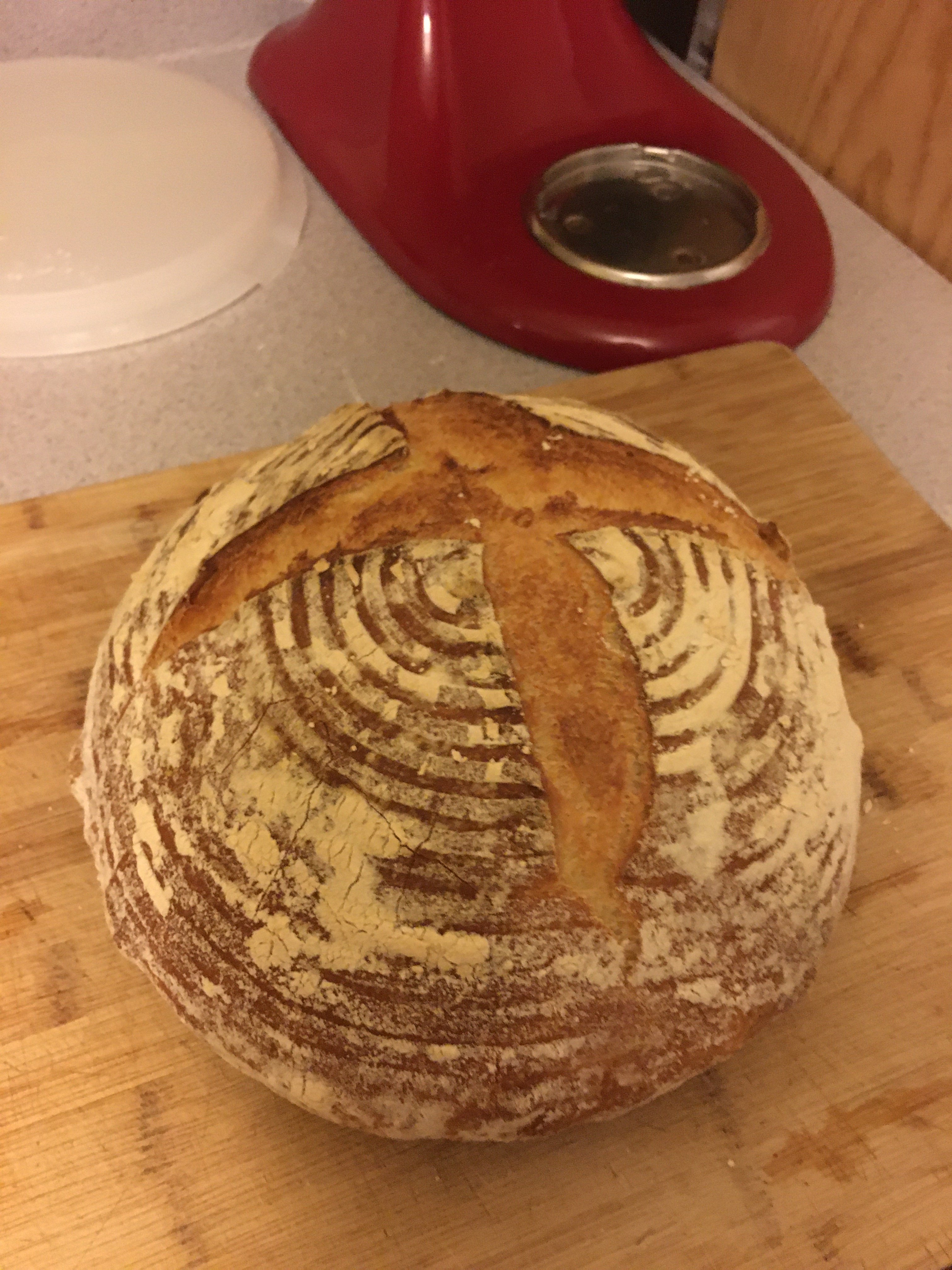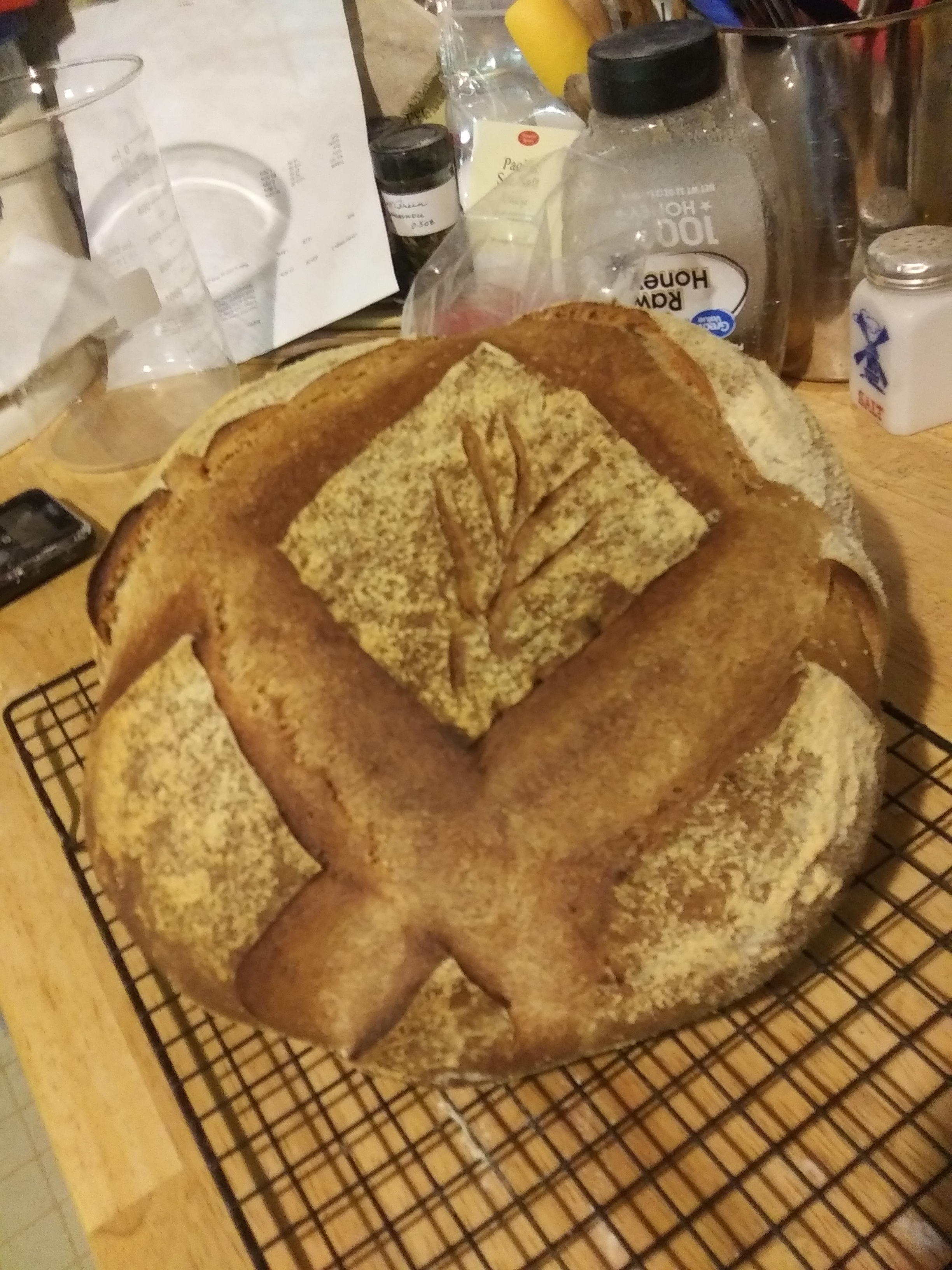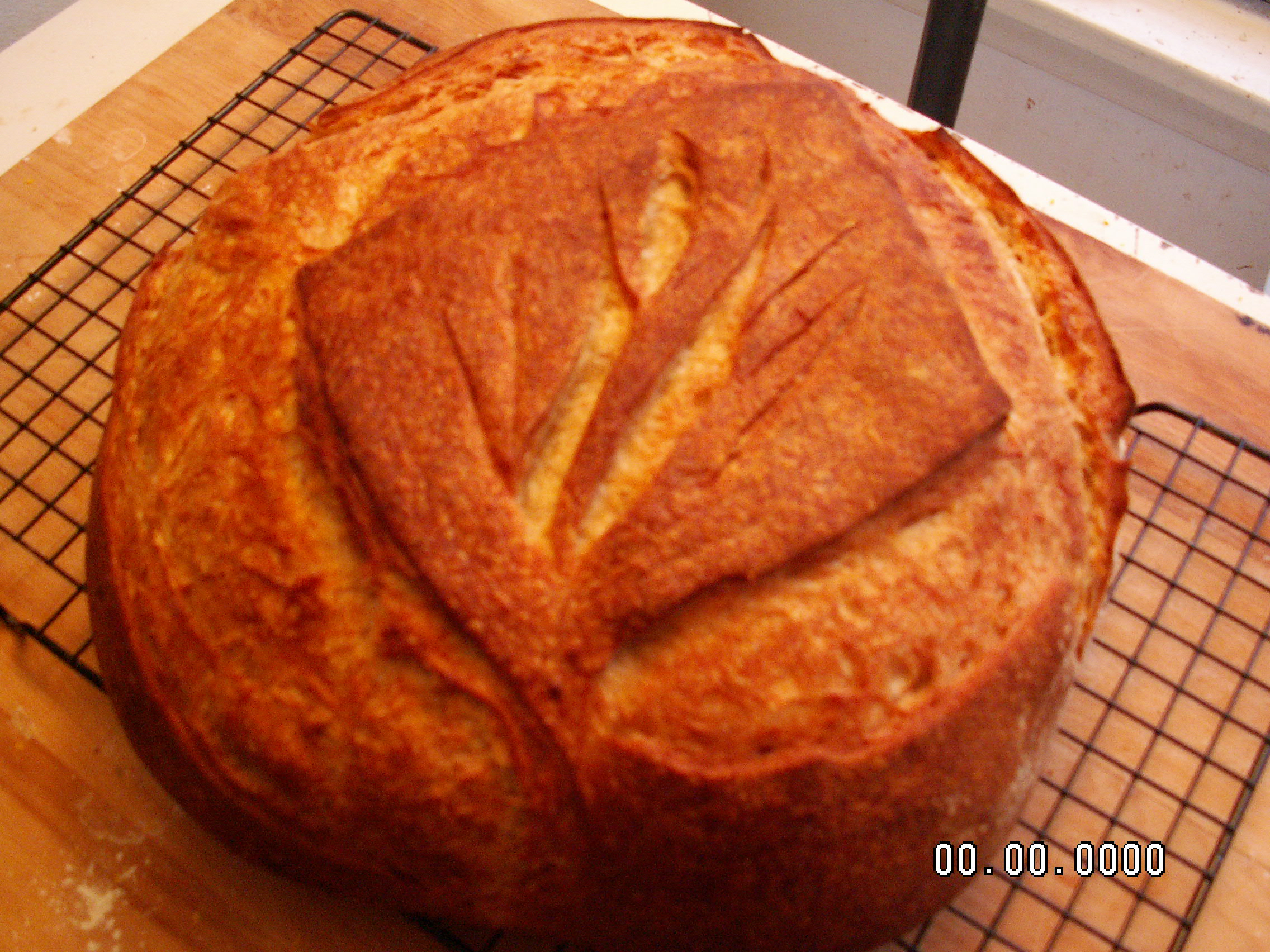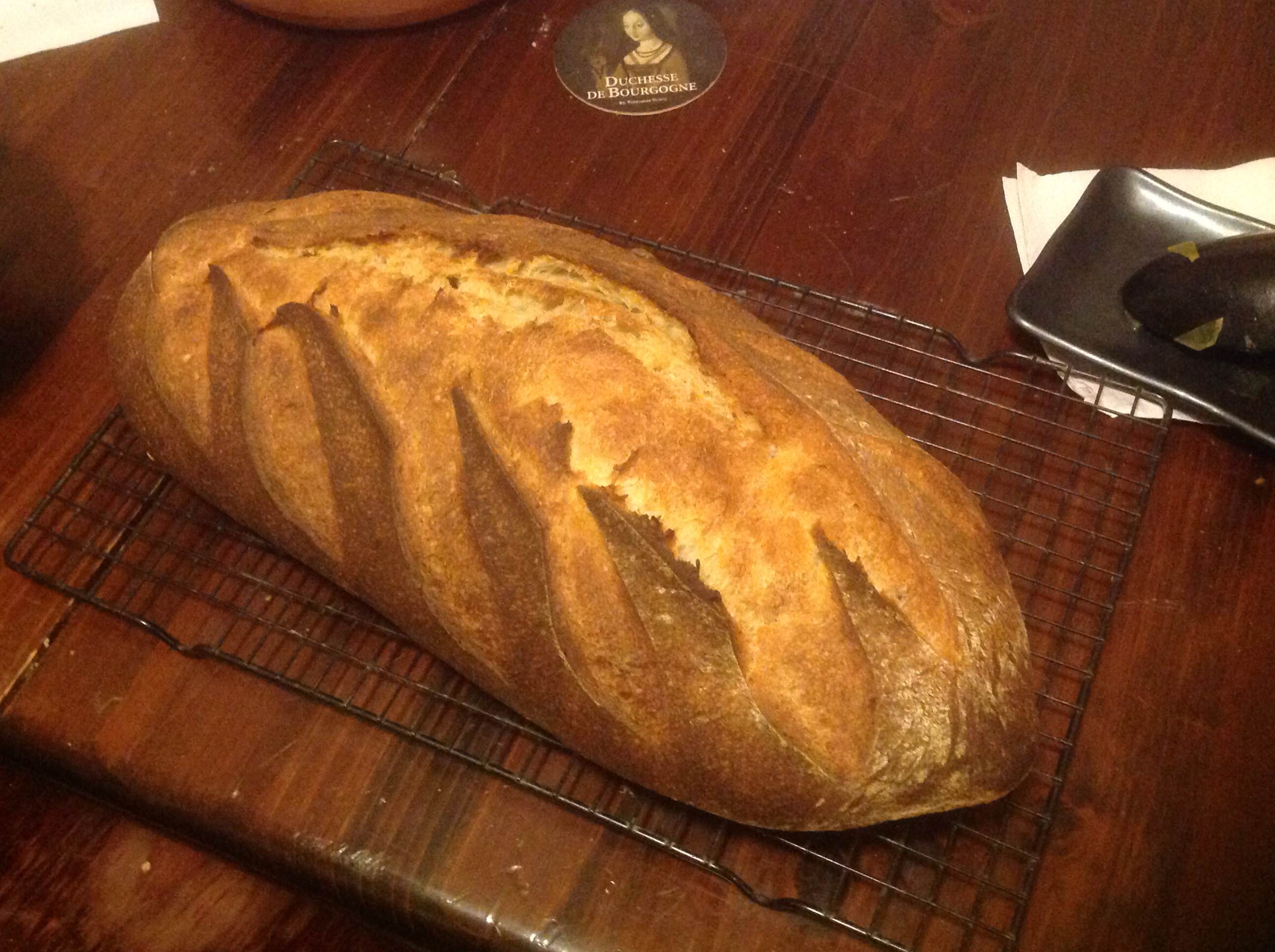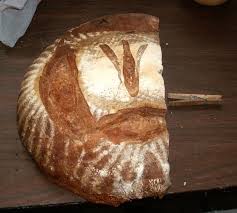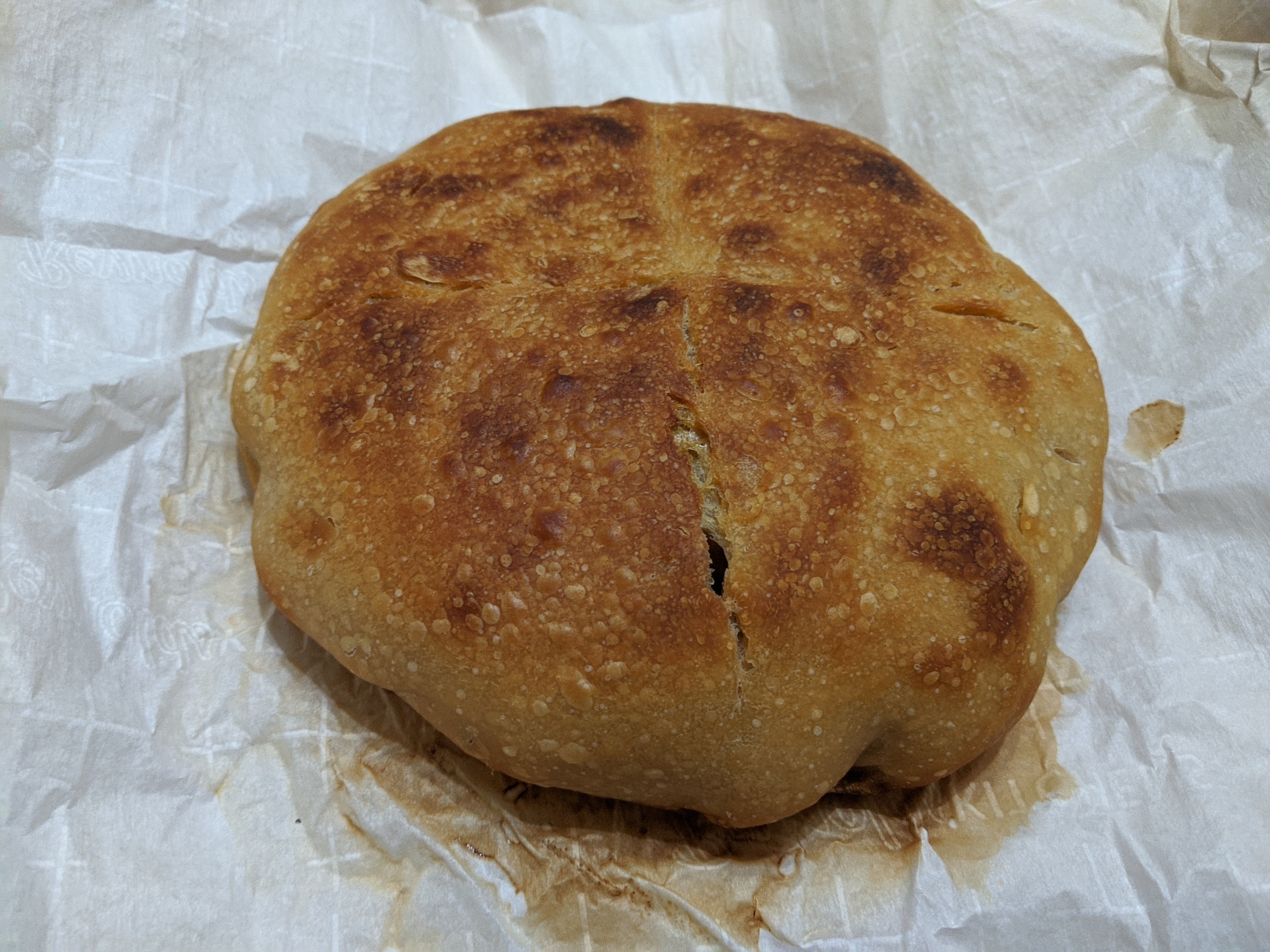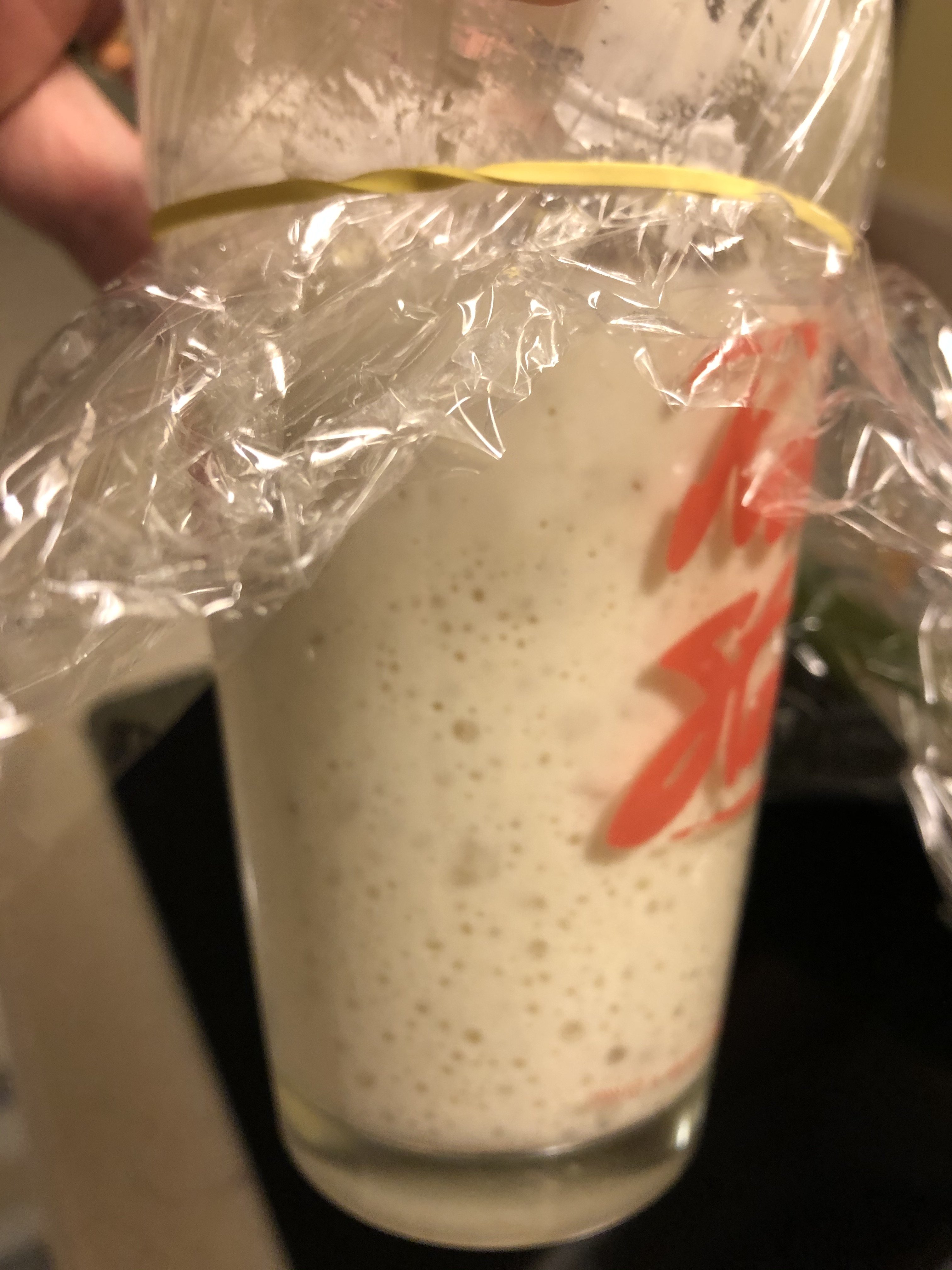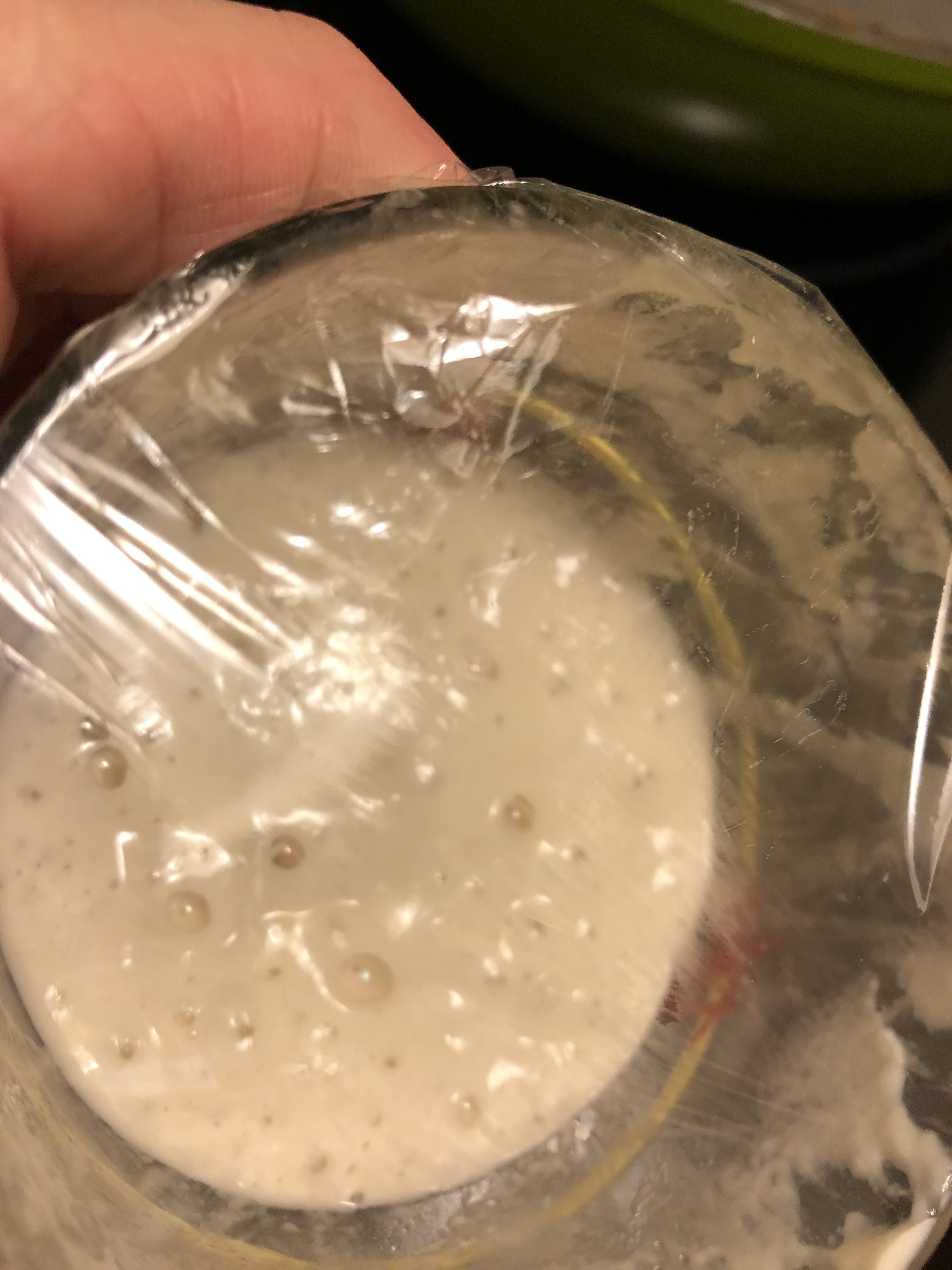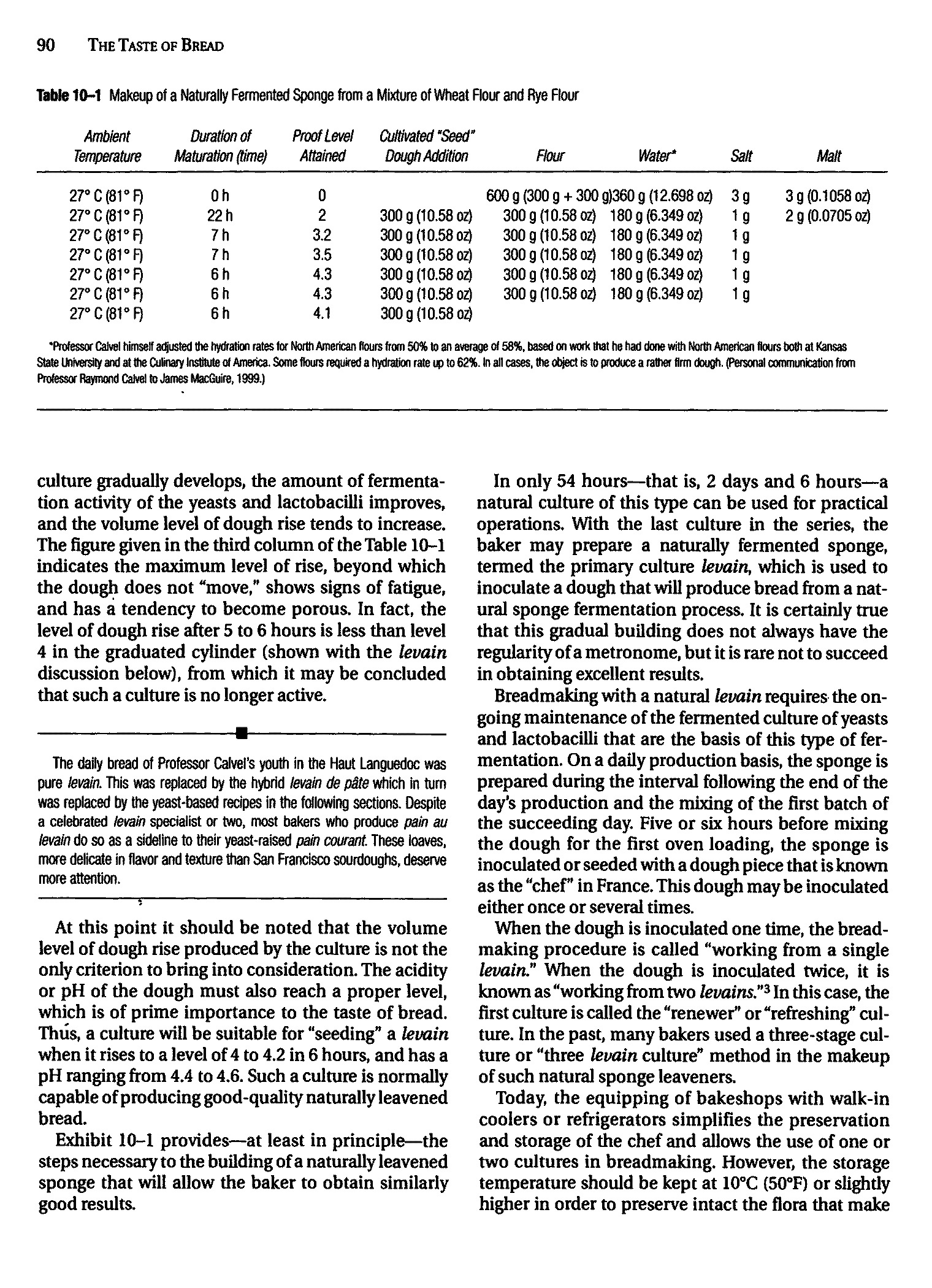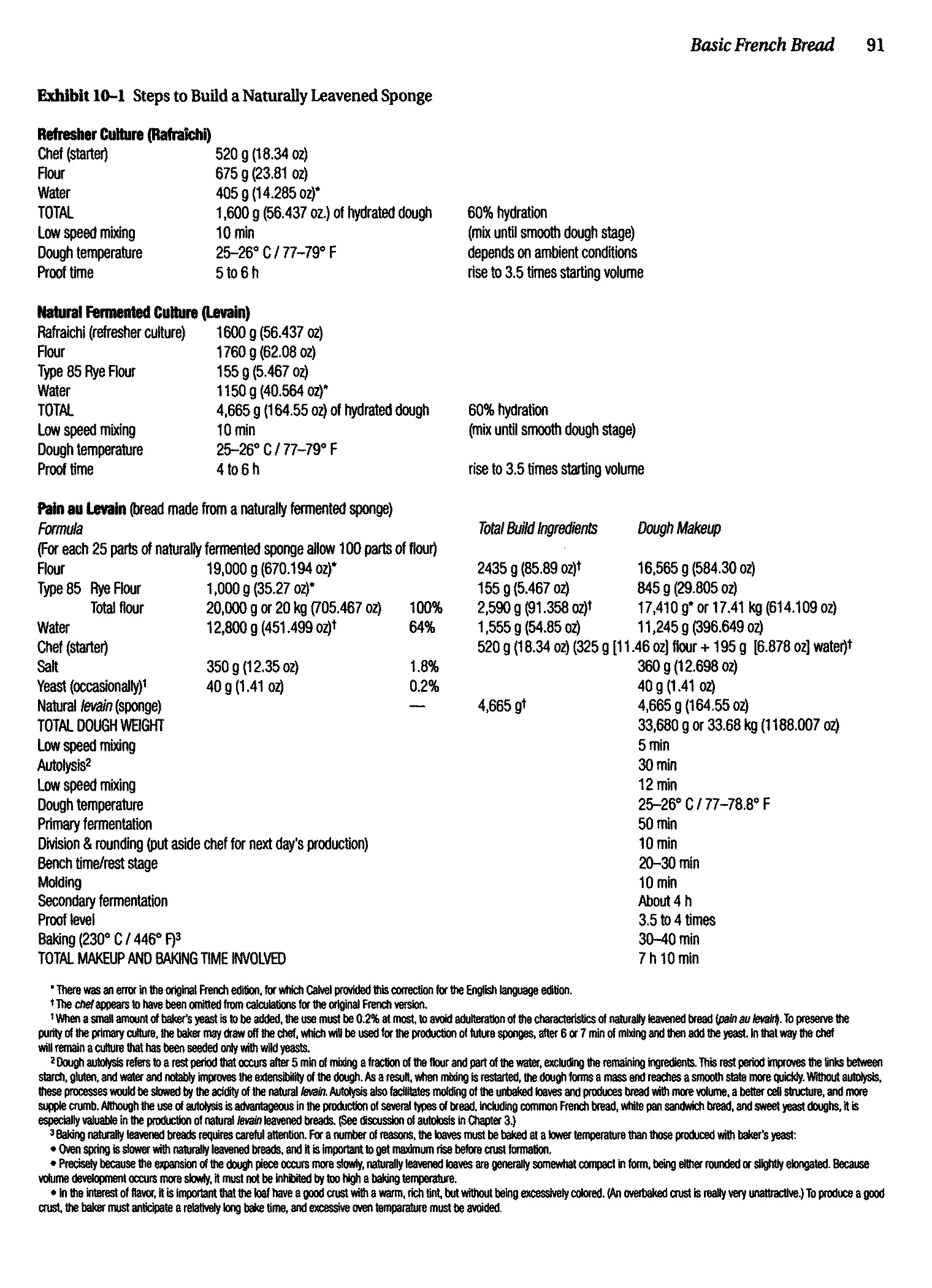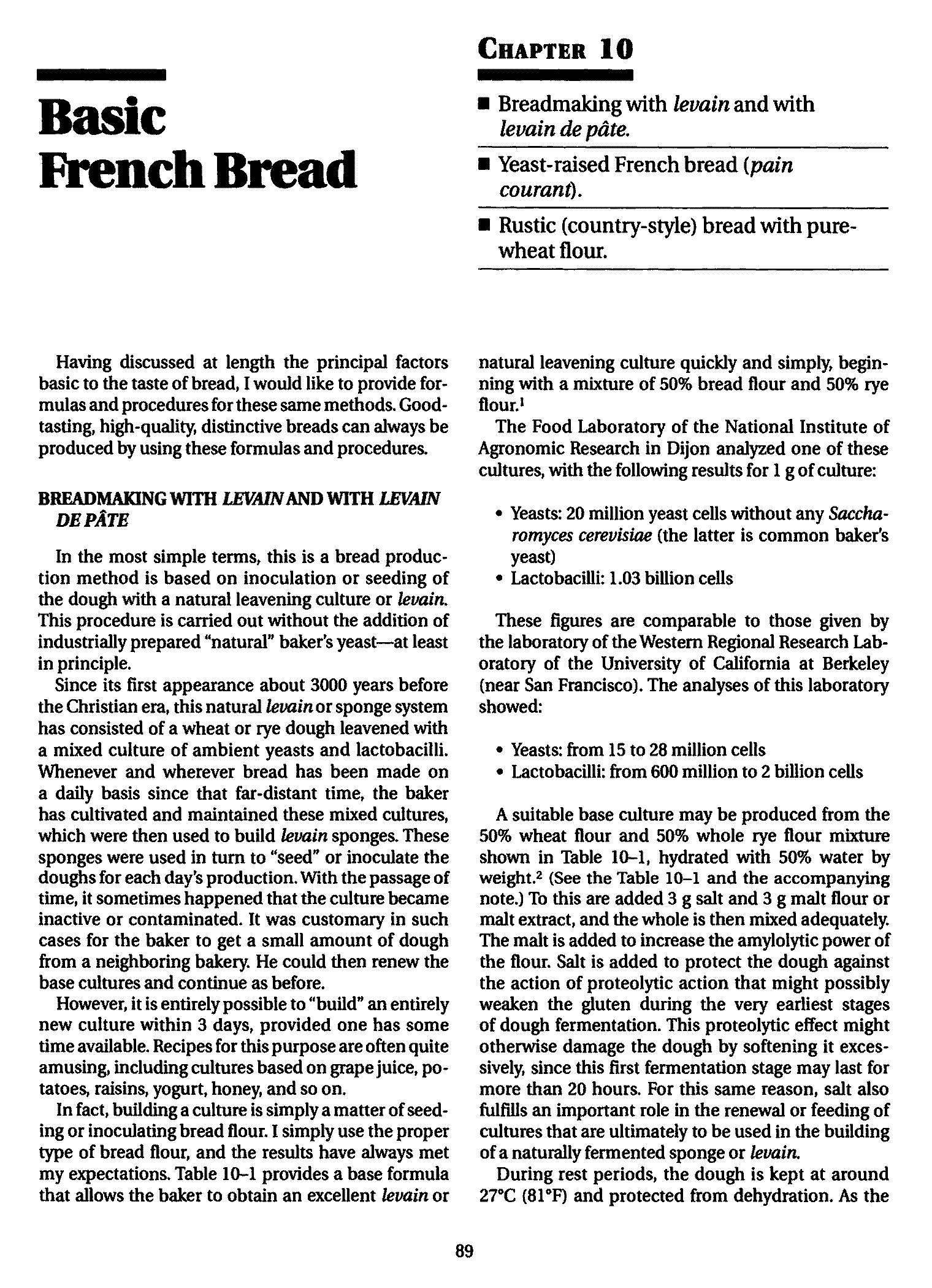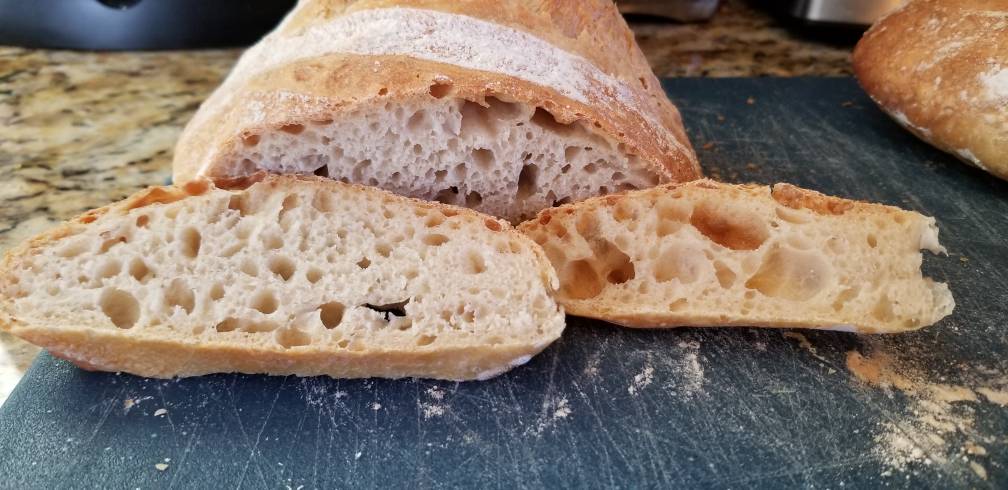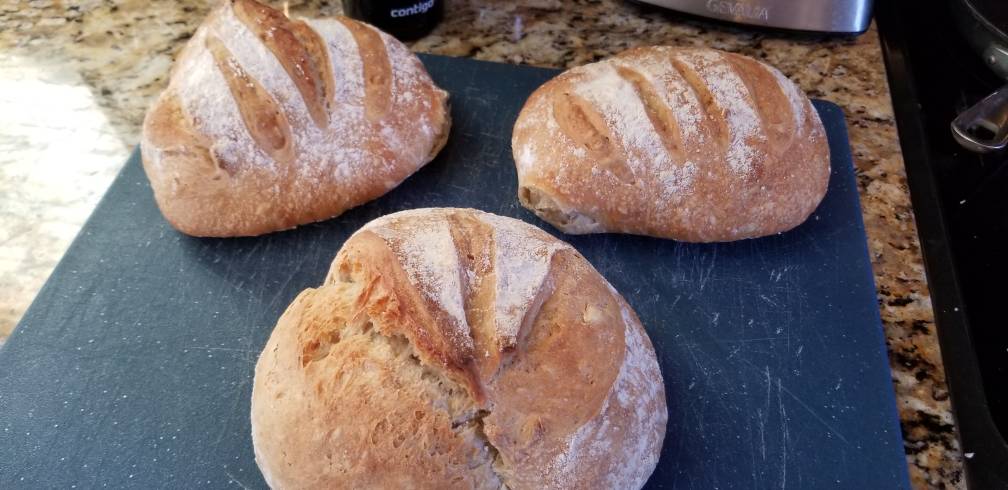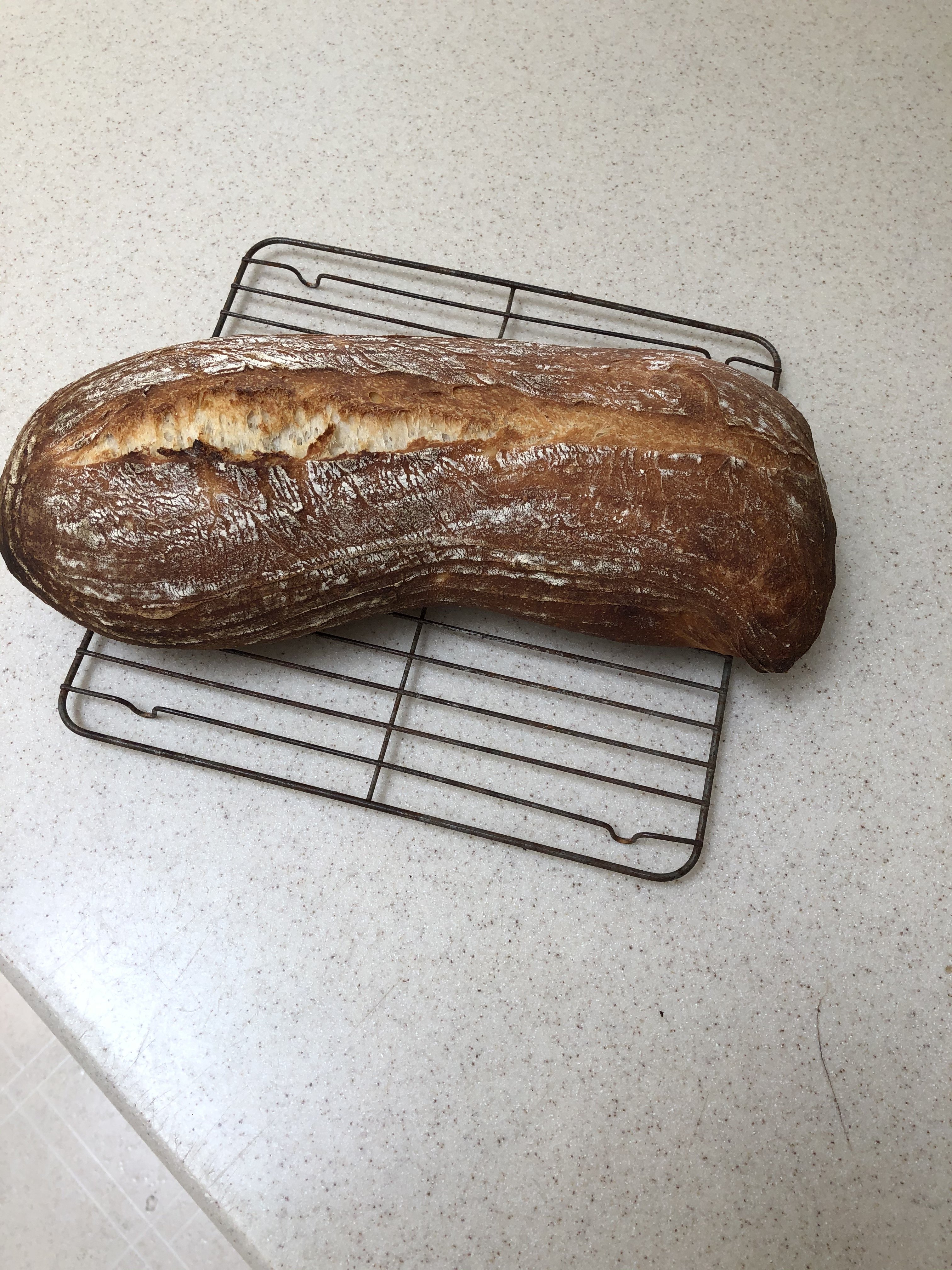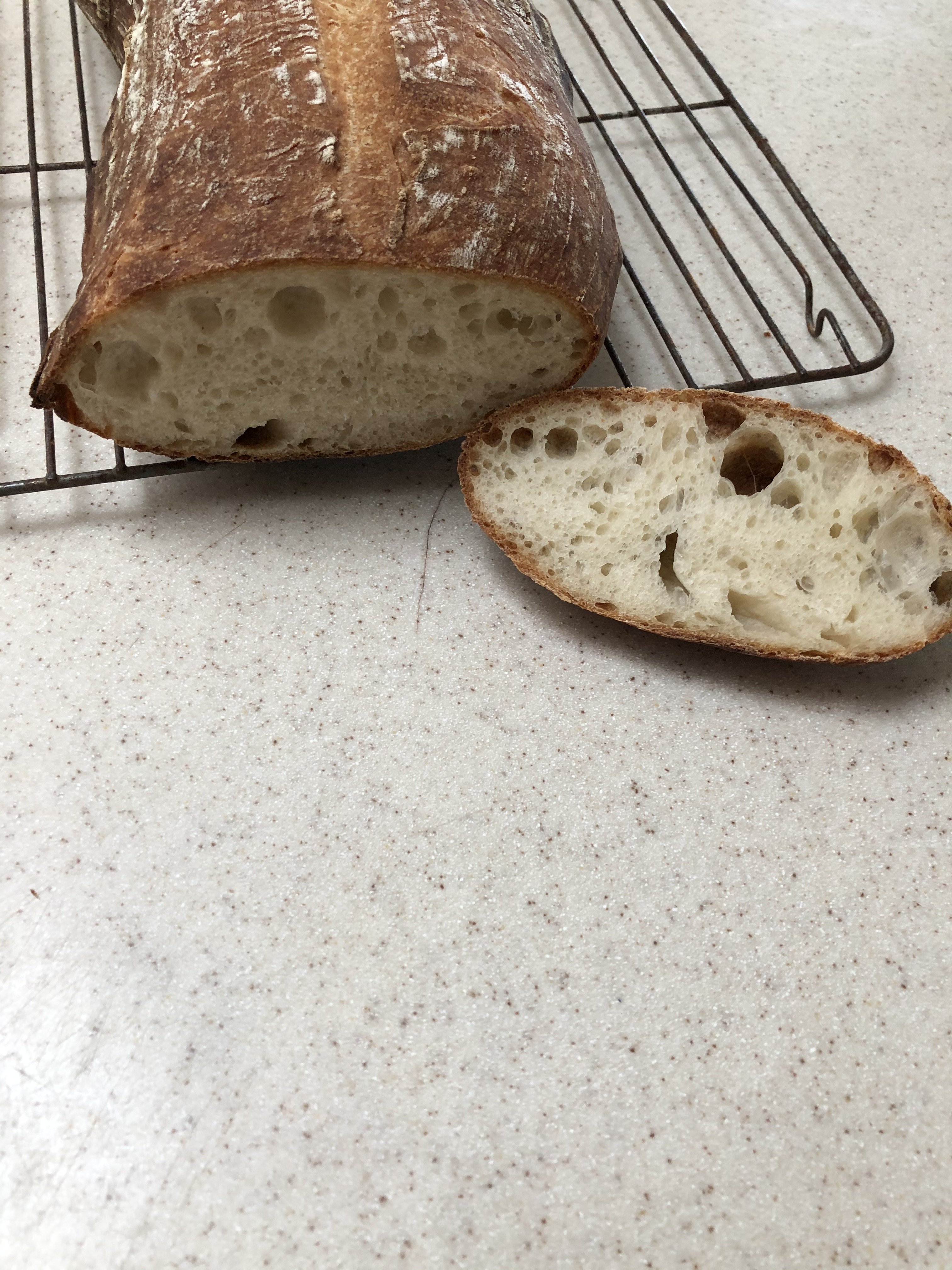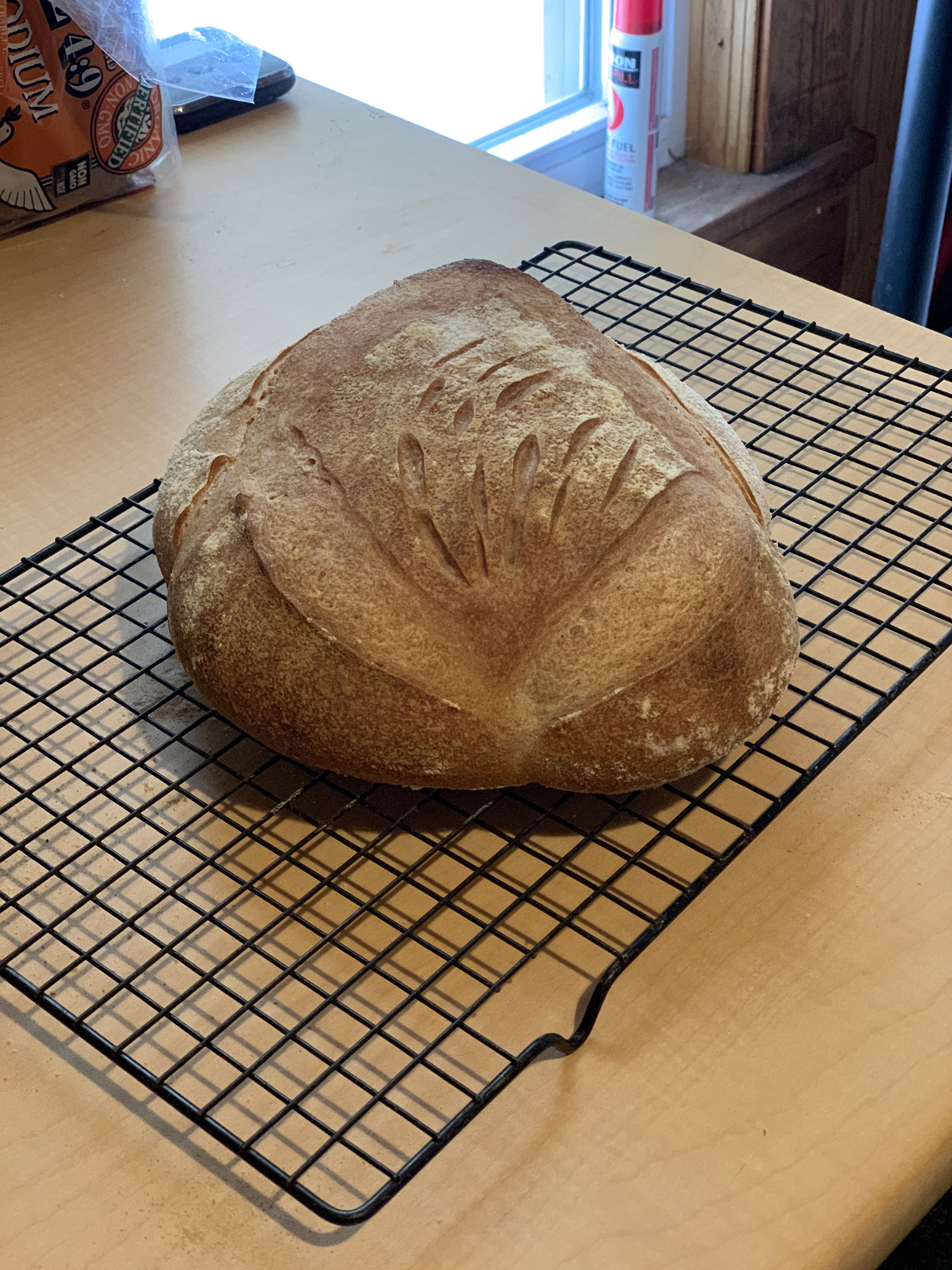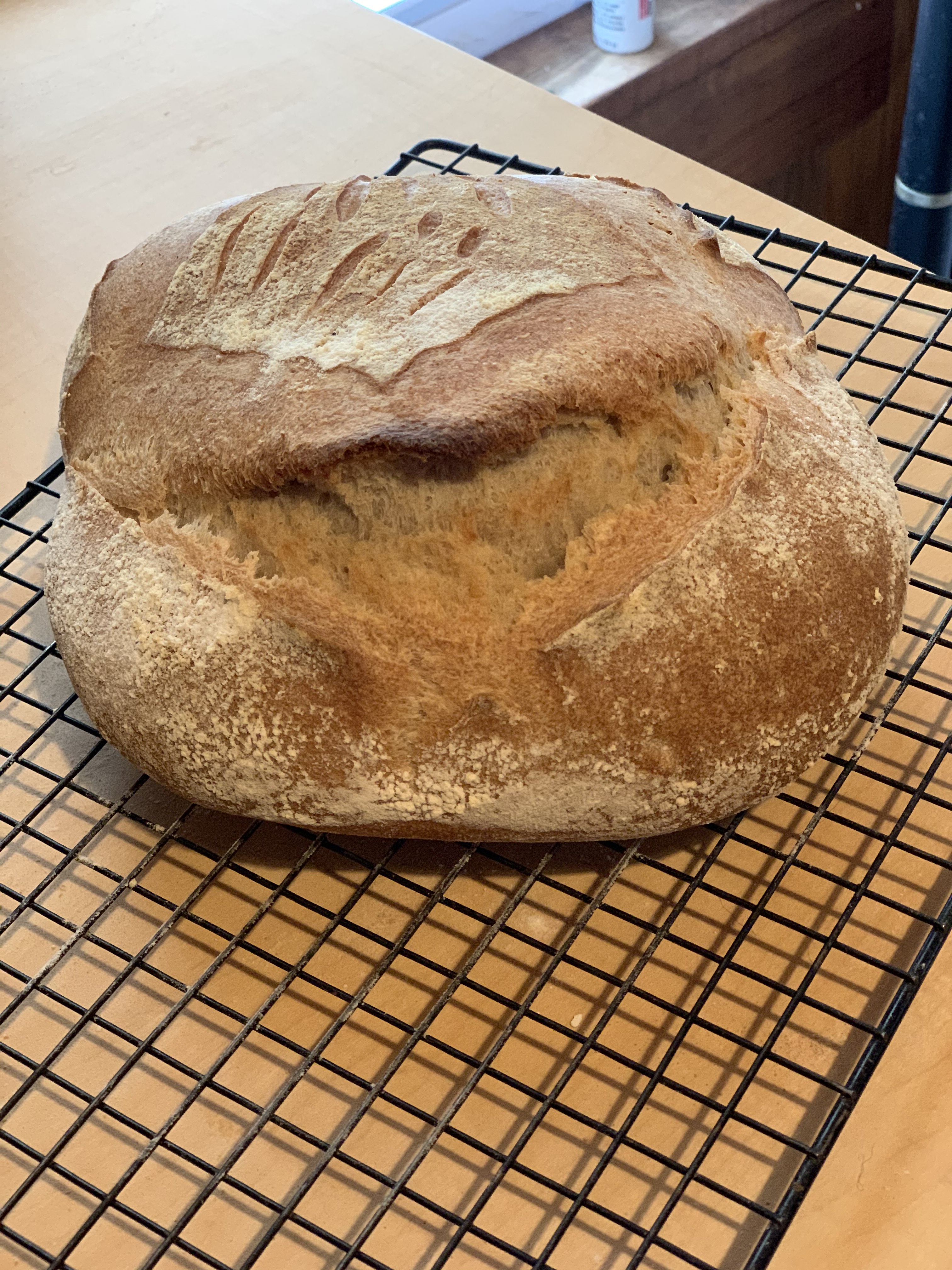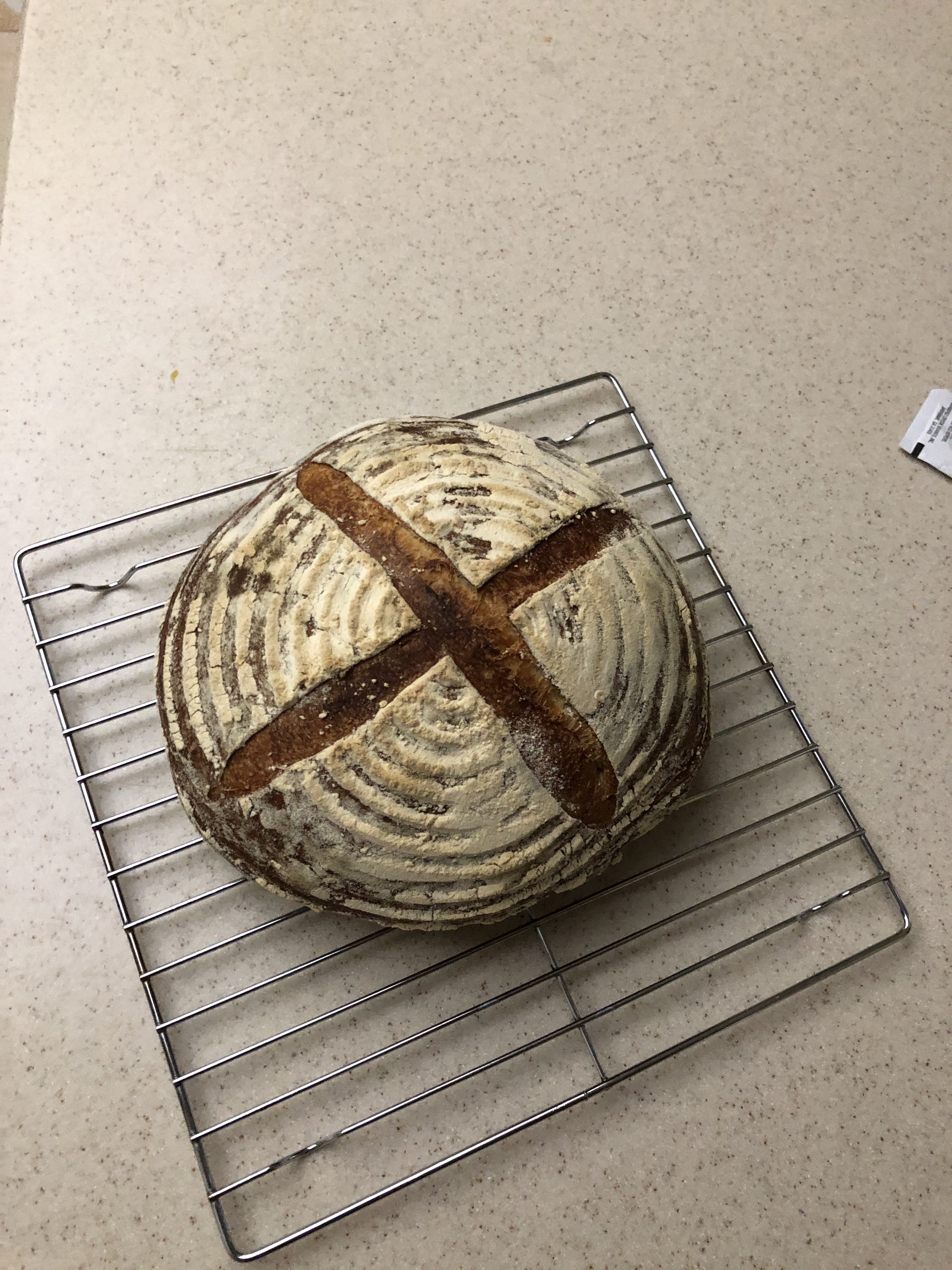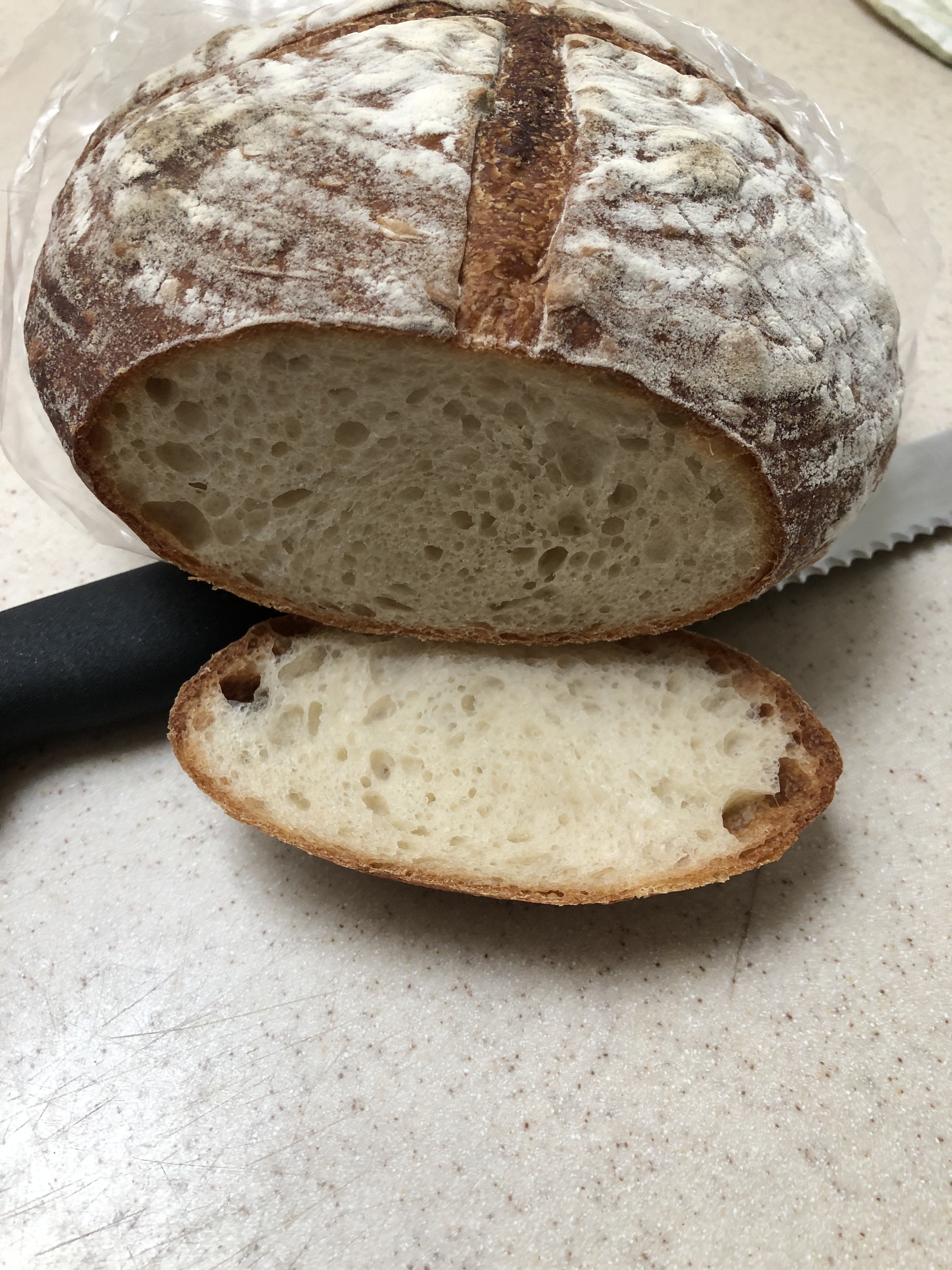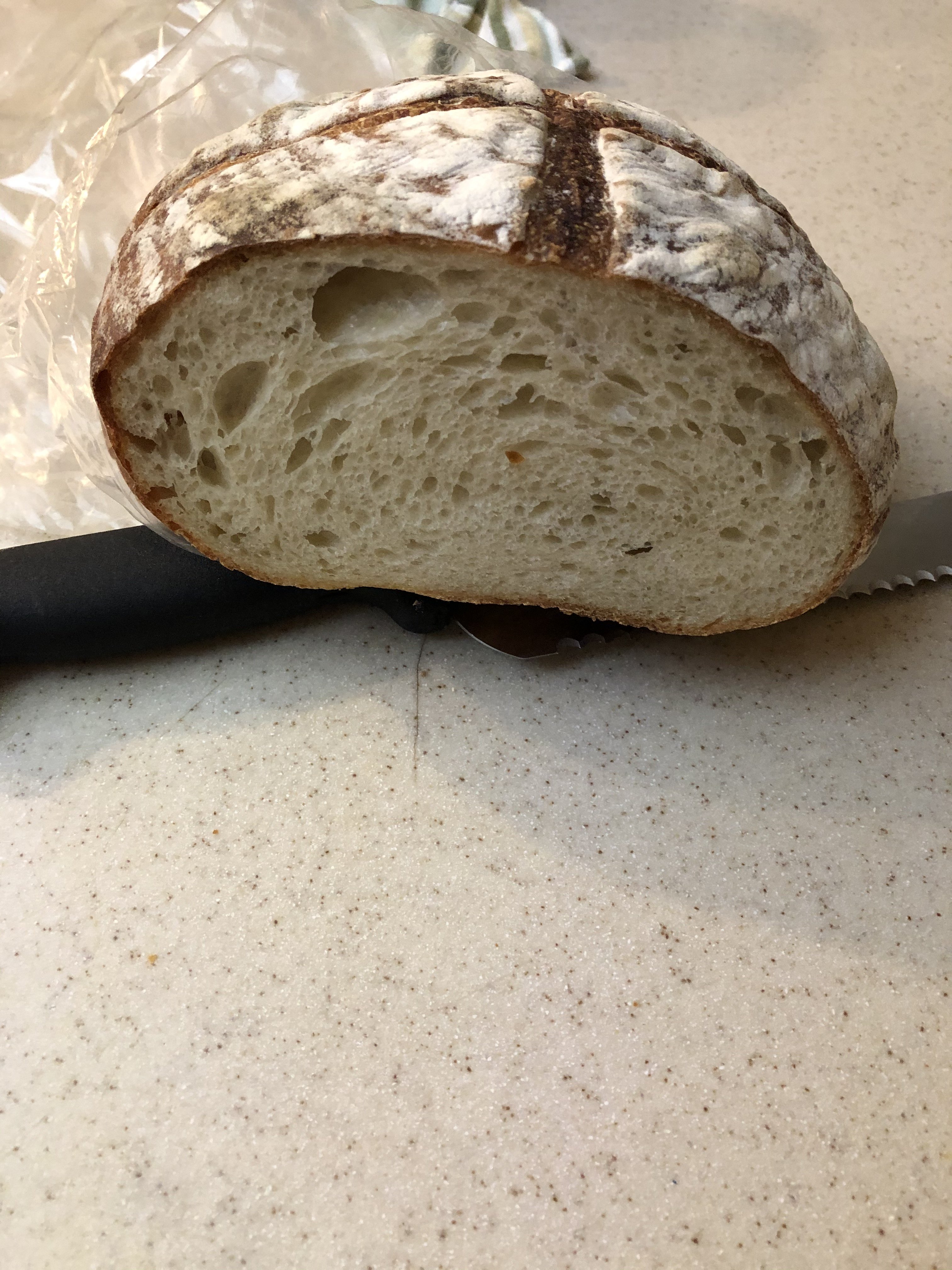The first loaf I made from this starter was proofed for 18 hours in its first rise. That one didn't double in size like the second one (pictured in my previous reply). This one was given a longer rise (didn't want to mess with it while my wife cooked lunch), so it might have over-proofed a little.
I just got this starter from one of my wife's co-workers. I fed it the day after I got it and then I fed it yesterday (roughly a week in between). After I feed it I usually leave it out on the counter for several hours, and then I keep it in the fridge. I usually like to feed it 1:1 water:flour (by weight), but when I got it the starter looked really runny, so I have been giving it more like 1:3.
I don't think the starter exactly doubles in 8 hours, but it certainly is active after a few hours at room temperature.
FWIW, my starter routine:
I shoot for getting the starter rocking with 3 feedings daily until I can get a 3X-3.5X in 6-8 hours. I do a 100% hydration, and typically go with a small part dark rye for flour.
Way more than I need but I've found I tend to get better results with a certain critical mass to work with.
I ferment at 78F.
150 grams total.
50 grams seed chef, or levain, or starter - all the same thing, the "seed."
50 grams water at temp to give dough temp of 78F
50 grams flour: 27 g King Arthur AP, 13 g Dark Rye.
Mix very well until homogeneous, ferment. At first it will be much longer than 6, 8 or more hours. I watch the starter and look for the dome on top. I don't go by time but by observation. I'll typically allow a very small receding, but not a total caving - streaks on glass, concave center, showing nutrients have been used up and yeasts/LB's are slowing down quite a bit, moving into a likely too acidic environment.
Pain, because it's a 3X daily feeding, but it gives me good results. I usually have 125 ml to start and end up now at 375 ml by 5 1/2 hours. It rocks in a bulk ferment and gives good flavor - not too sour. I prefer a French-style levain to a San Francisco sourdough.
Refresh by pulling 100 grams and adding back in 50 H20 and 50 g of the flour mixture.
If I move to a once a day thing, I'll usually go to a 20% seed levain inoculation, e.g., 20g g seed levain, 40 g water, 40 gram flour mixture. It's also something I do when I've abused the starter by too much cold storage (I find it's out of balance, with or without hooch on top - starting slow like this and gradually building back up has worked for me).
You'll see above I'm coming back in myself so take it with a grain of salt, but by the photos, I'm seeing more blistering - are you pulling these directly from cold retardation and baking? Personally, I like blistering and got my most intense springs from the direct-from-retardation baking. Just a thought if these are on your mind.
I agree with ba-brewer in suspecting your starter sounds like it needs to kick up to a bit more robustness. I'd just work it up till it can double or triple like ba-brewer or I suggest (the tripling I learned from Raymond Calvel, French baking scientist, etc.). My regular pain levain gets a relatively short bulk ferment of 50 minutes then a shape, mold and final proof over 4-6 hours, or until at proper proofing condition. I'd guess this is likely the main issue. Just a guess.
The other thing I'm wondering is your mixing routine. Dough hydration, time, speeds?
For most of my wheat sourdoughs, I usually fold and undermix just a bit (or by a lot, depending on mood and how much I want to play with folds), depending on 2 1/2 hours or so of bulk ferment and regular foldings (depending on the dough strength coming out of the mixer, once, twice, or even three times, for really slack doughs) to develop gluten strength. Folding blows my mind with how well it works to bring a proper dough strength.
The only other thing I'd wonder is your shaping routine. It's possible you might have knocked out some nice gas pockets by too rough of a shaping, but I doubt it. Your first breads look wonderful. This bread looks like it needs to be toasted, then slathered with butter, then disappear.
Just a few thoughts. Hope my memory is correct as I said, I'm coming back and have forgotten a good deal.





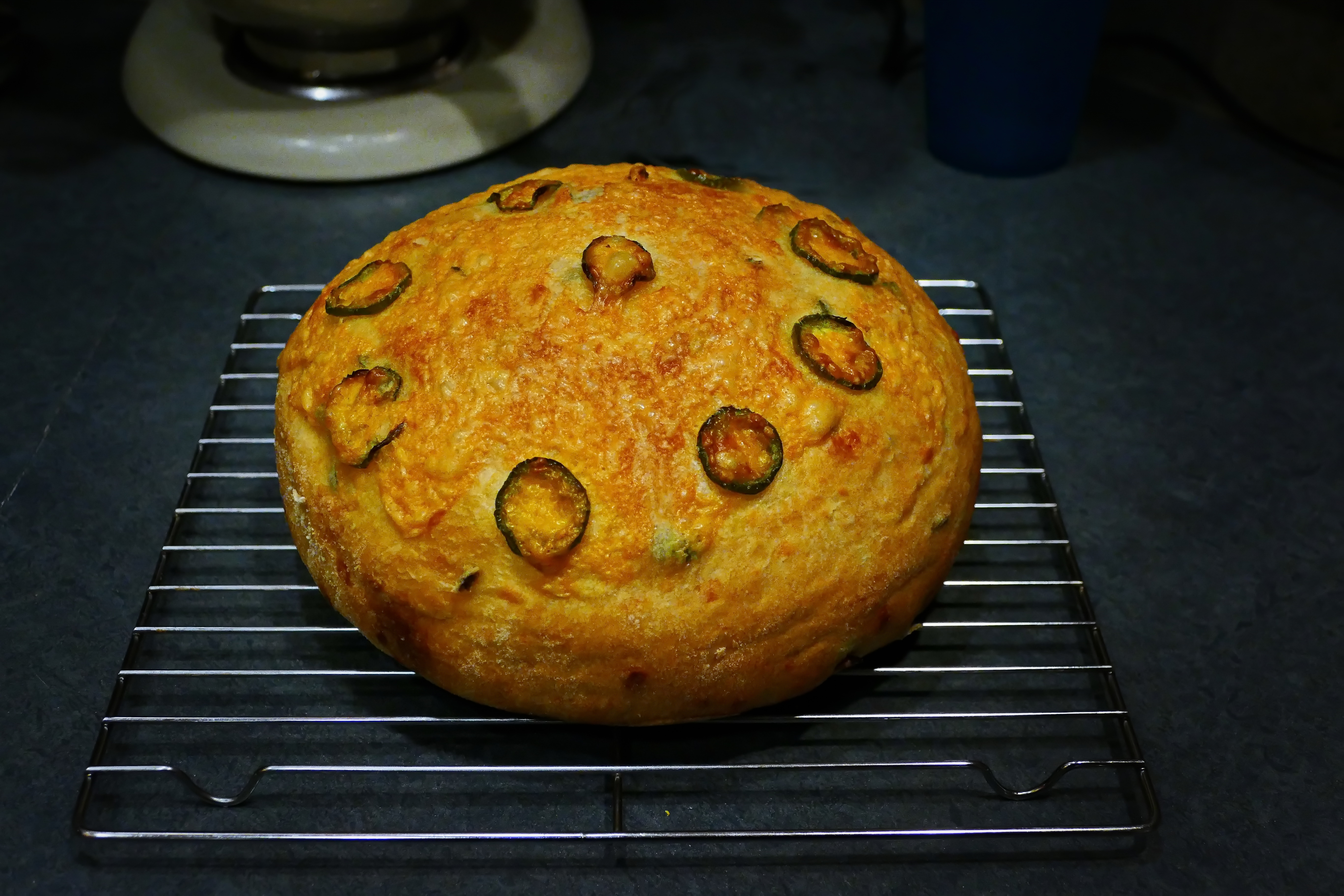
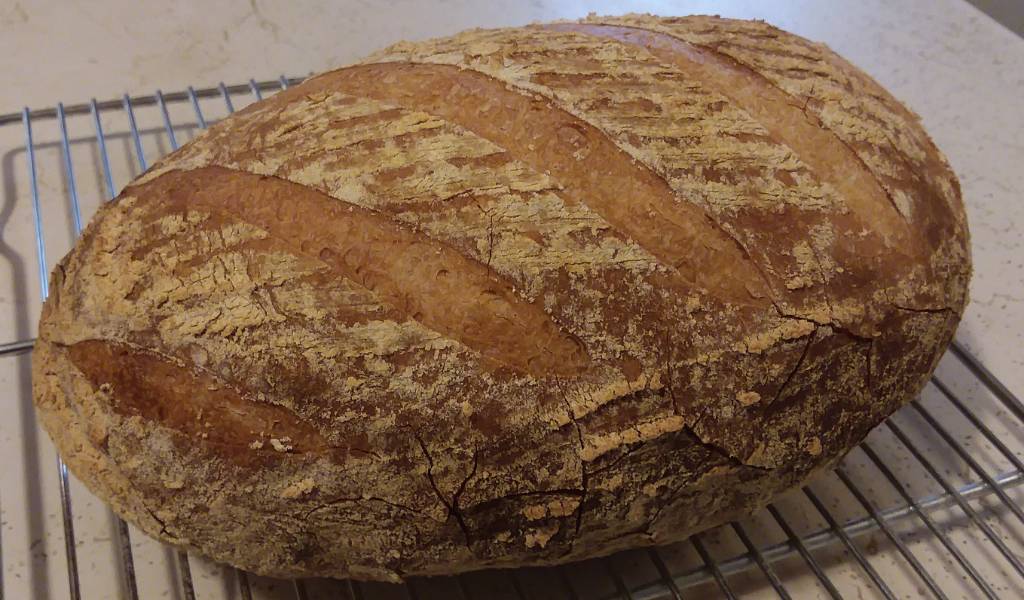


![Craft A Brew - Safale BE-256 Yeast - Fermentis - Belgian Ale Dry Yeast - For Belgian & Strong Ales - Ingredients for Home Brewing - Beer Making Supplies - [3 Pack]](https://m.media-amazon.com/images/I/51bcKEwQmWL._SL500_.jpg)




















































